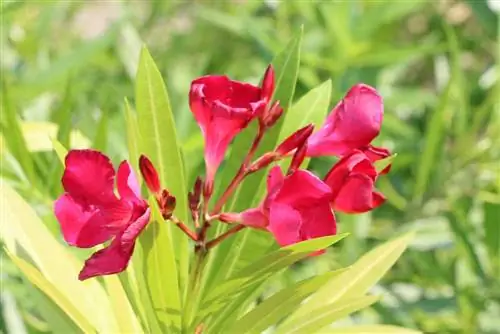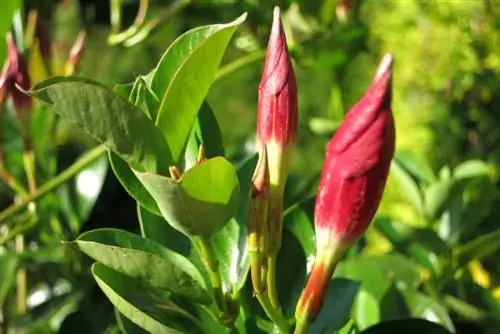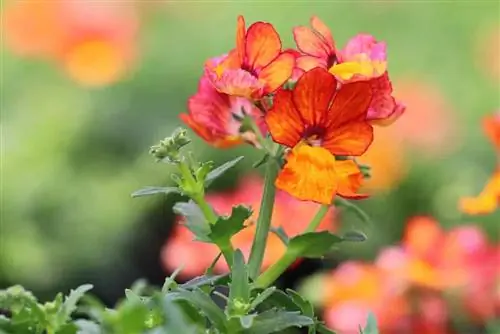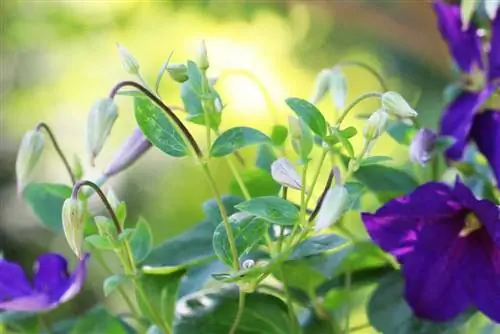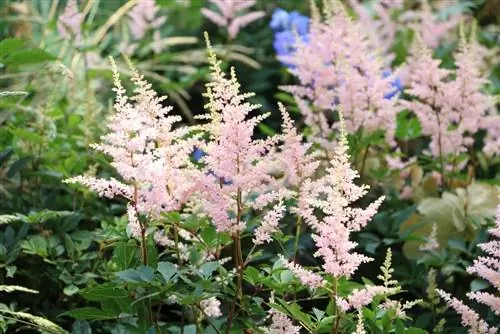- Author admin [email protected].
- Public 2023-12-17 03:39.
- Last modified 2025-01-24 12:45.
Anyone who owns a south-facing balcony is spoiled for choice when it comes to growing plants. Because many plants prove to be sun lovers and actually thrive best when they are in the blazing sun. Although they have the same location requirements, the plants sometimes differ enormously in their appearance and care. The selection of sun-loving plants is large, so there is sure to be a plant to suit every taste!
Colorful plants
A variety of colorful ornamental plants can be grown on the balcony at home, which provide a real highlight with their lush inflorescences. There are also different varieties of many flowers, which differ, among other things, in their height and flower color. Therefore, there are suitable decorative plants for every taste and every balcony size.
Bougainvilleas (Bougainvillea)
The bougainvillea is a perennial climbing plant that forms extremely long shoots. These also grow taller, which is why supporting them with a trellis is recommended. The triplet flower prefers a sheltered location as it cannot tolerate heavy rain or drafts. This plant requires little care; all that is important to it is a regular supply of water. In the summer months, the bougainvillea should be watered several times a day, but waterlogging should be avoided. Pruning is recommended if the plant is too large or will be overwintered.

- Synonyms: triplet flower, bougainvillea
- Flower color: mostly violet, but also red, white or yellow
- Flowering period: May to October
- Growth height: up to 5 meters
- Water requirement: very high
- Fertilizer requirement: medium
- Cutting: yes
Gazania (Gazania)
Gazania is basically a perennial plant, but in local regions it is usually cultivated as an annual. The flower is also known as “midday gold”, the name being directly related to its flowers. Because these only open at midday if it is in sunlight. However, if it is cloudy or rainy, the gazania leaves its flowers closed. To stimulate flower growth, it should be cleaned out regularly. Although the Gazania is not hardy, it can be overwintered in a cool, bright location. The care required for this is minimal because it does not want to be fertilized in winter and only needs to be watered moderately.

- Synonyms: sun thaler, midday gold flower, midday gold
- Flower color: white, yellow, orange, red pink, purple
- Flowering period: May to September
- Growth height: about 30 cm
- Water requirement: medium to high
- Fertilizer requirement: medium
- Cutting: no
Oleander (Nerium Oleander)
The colorful oleander can reach an impressive height of up to three meters. However, the growth can be controlled with regular cutting so that it always fits on the balcony. In spring it is also advisable to cut the oleander back by about a third. Pruning not only ensures a bushier growth habit, but also a more even distribution of the flowers. In addition to annual pruning, the oleander also needs to be fertilized and watered regularly. It should also be noted that the plant is poisonous and direct contact can cause skin irritation. It is therefore advisable to always wear gloves during all care procedures.
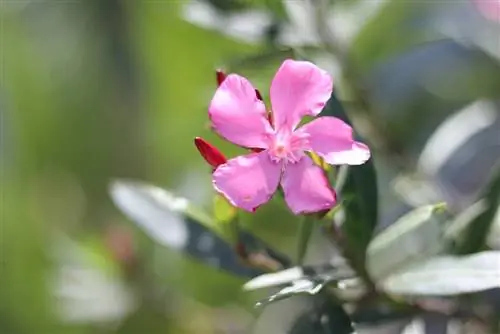
- Synonyms: rose laurel
- Flower color: white, pink, violet
- Flowering period: June to September
- Growth height: up to 3m
- Water requirement: high
- Fertilizer requirement: high
- Cutting: yes, pruning in spring
Easy-care plants
If you don't want to spend too much time caring for balcony plants, you are well advised to choose easy-care specimens. Many of these ornamental plants are not only extremely robust, but are usually satisfied with sufficient sunlight.
Blue daisy (Brachyscome iberidifolia)
There are different varieties of the blue daisy, which differ in both their growth style and their flower color. As a rule, the flower is considered extremely robust and requires minimal care. Because their water requirements are low and fertilization is only required every few weeks. The blue daisy is not hardy, but can be overwintered in a bright, cool location.

- Synonyms: Australian daisy
- Flower color: white, blue, violet pink
- Flowering period: May to October
- Growth height: 30 to 40 cm
- Water requirement: low
- Fertilizer requirement: low
- Cutting: no
Sedum (Sedum)
The sedum is a succulent and therefore requires extremely little water. The plant stores water in the leaves and stem, which is why it only needs to be watered every now and then. Their nutrient requirements are also minimal, so fertilizing is not absolutely necessary. The robust plant can easily survive the winter on the balcony, but the withered inflorescences should be cut off beforehand. In the spring, the bare parts of the plant are also removed, which promotes new growth.
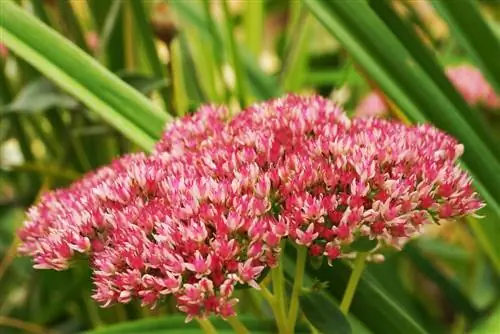
- Synonyms: stonecrop, fat leaf
- Flower color: red to pink, white
- Flowering period: July to October
- Growth height: approx. 45 cm
- Water requirement: low
- Fertilizer requirement: low
- Cutting: yes, radical pruning in March
Herbs
In addition to the colorful ornamental plants, all kinds of herbs are also very popular. Because many well-known kitchen spices can be easily grown on the balcony at home. The advantage here is obvious: On the one hand, the herbs decorate the outdoor area and on the other hand, they can be harvested and used directly for cooking. On top of that, many of the herbs are considered bee-friendly plants because they serve as a food source for the insects.
True laurel (Laurus nobilis)
The real laurel produces comparatively inconspicuous flowers, but the plant impresses with its aromatic scent. On top of that, the bay leaves can be used excellently in cooking and refine numerous dishes. The plant thrives best in a water-permeable substrate and prefers a root ball that is always moist. It is therefore advisable to only water when the top layer of soil is already dry. The real laurel is only fertilized during the growth phase, and a long-term fertilizer is best suited for this. It is also advisable to trim the plant from time to time so that it does not become too large.
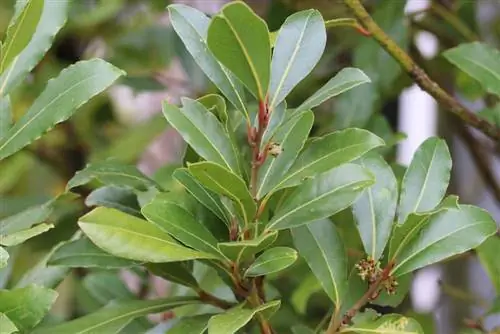
- Synonyms: noble laurel, spiced laurel
- Flower color: white
- Flowering time: May, June
- Growth height: up to 10 m
- Water requirement: medium
- Fertilizer requirement: medium
- Cutting: yes
Rosemary (Rosmarinus officinalis)
The evergreen rosemary is a subshrub whose leaves are also often used for cooking. The fragrant rosemary leaves also attract numerous insects, with butterflies in particular enjoying the plant. The Mediterranean plant can cope with drought without any problems, but cannot tolerate waterlogging. Therefore, it is advisable to regularly water the rosemary with a small amount of water. To promote the growth of the plant, annual pruning in March is also recommended.
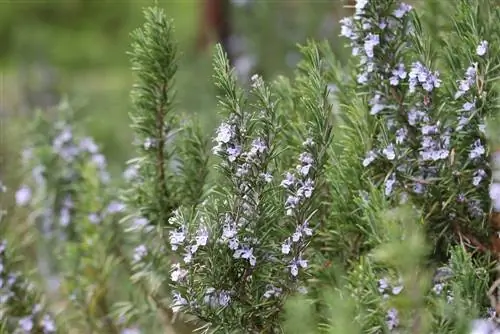
- Flower color: violet, blue, pink white
- Flowering time: March to April
- Growth height: up to 2m
- Water requirement: medium
- Fertilizer requirement: low
- Cutting: yes
True thyme (Thymus vulgaris)
The real thyme is both hardy and perennial. Thanks to its compact growth, it is ideal for growing on the balcony. It not only decorates it with its violet flowers, but also exudes a spicy scent all year round. The real thyme is comparatively easy to care for and is not considered demanding: it requires little fertilization and watering, although waterlogging should always be avoided. Pruning in autumn is particularly good for thyme, as the plant tends to become woody as it gets older.
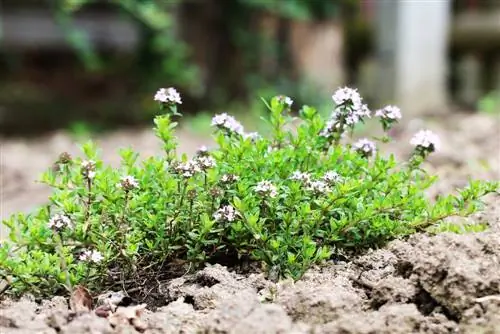
- Synonyms: thyme, tripe herb, garden thyme, Roman thyme
- Flower color: violet
- Flowering period: July to September
- Growth height: up to 40 cm
- Water requirement: medium
- Fertilizer requirement: low
- Cutting: yes
Fruits and vegetables
In addition to numerous ornamental plants and herbs, many types of fruit and vegetables also thrive in full sun locations. The advantage of these crops is obvious: they not only impress with their decorative appearance, but also promise a high-yield harvest if cared for properly. If you would like to snack on home-grown fruits and have a sunny balcony at your disposal, you should consider growing the following crops:
Strawberry (Fragaria)
The sweet strawberries can be harvested all summer long if cared for properly. When growing strawberry plants, in addition to a location in full sun, you should also ensure there is sufficient planting distance, which should be at least 20 centimeters. Caring for hardy strawberries includes regular watering, although waterlogging must be avoided at all costs. The plant is best fertilized with an organic fertilizer so that the fruits can be consumed safely. Pruning is usually not necessary, only yellow and faded parts of the plant should be removed regularly.
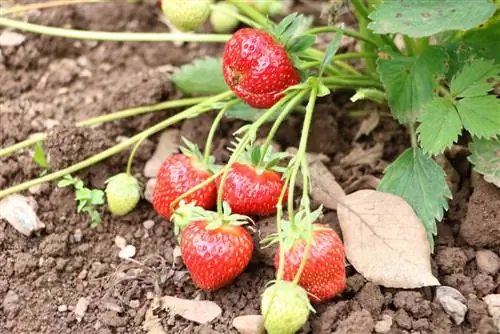
- Flower color: white
- Flowering time: depends on variety
- Growth height: about 30 cm
- Water requirement: high
- Fertilizer requirement: high
- Cutting: no
Tomato (Solanum lycopersicum)
Tomatoes can be easily grown on the balcony, and cocktail and cherry tomatoes are particularly suitable for this. Depending on the variety, these can be cultivated in hanging baskets as well as in balcony boxes or pots. In addition to regular watering and fertilizing, caring for tomato plants also includes rooting out. However, professional care is usually rewarded with a lushly growing plant and a productive harvest.
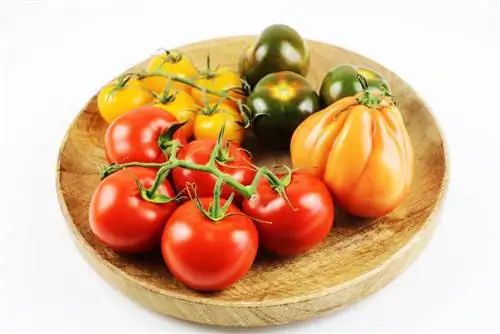
- Synonyms: tomatoes, love apples
- Flower color: yellow
- Flowering period: April to July
- Growth height: up to 2m
- Water requirement: high
- Fertilizer requirement: high
- Cutting: yes
Insect-friendly plants
If you not only want to decorate your balcony, but also do something good for the animal world, it is best to grow bee-friendly plants. The nectar and pollen of these flowers are a welcome source of food for bees and other pollinating insects. In addition to numerous herbs, such as rosemary, colorful flowers also attract the natural helpers.
Mealy sage (Salvia farinacea)
The mealy sage is a bee-friendly plant that has a particularly high nectar value. It thrives best in a nutrient-rich substrate, which should also be loose and water-permeable. The sage does not require a lot of care, all that is important to it is a regular supply of water. In addition, you should always make sure that it is neither too wet nor too dry, as neither is good for it. The bee-friendly plant is perennial, but not winter hardy. In order to overwinter the sage, it must be moved to a cool, bright location in winter.
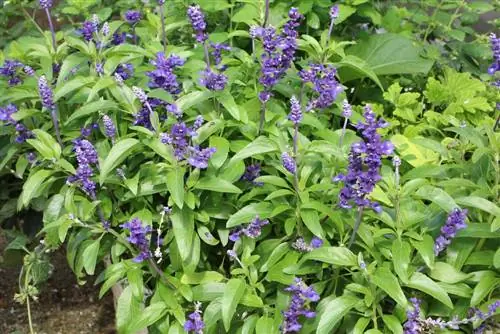
- Synonyms: corn sage, flour sage
- Flower color: white, blue, violet
- Flowering period: June to October/November
- Growth height: up to 60 cm
- Water requirement: medium
- Fertilizer requirement: low
- Cutting: no
Sunflower (Helianthus annuus)
A balcony in full sun is ideal for growing sunflowers. These grow incredibly quickly and can reach a height of over two meters after just a few weeks. Caring for this bee-friendly plant is relatively simple and requires frequent fertilizing and watering. Because both the nutrient and water requirements of the sunflower are extremely high. The decorative flowers not only decorate the balcony, but also provide numerous insects with their nectar and pollen. But it's not just insects that are attracted to this flower, as the sunflower seeds taste particularly good to birds.
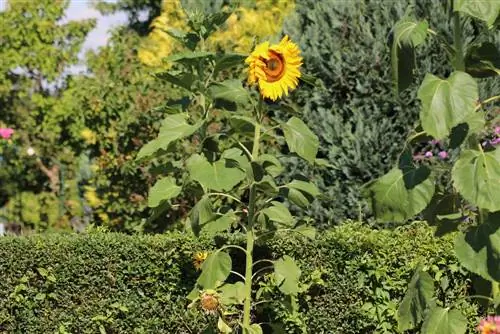
- Synonyms: common sunflower
- Flower color: yellow
- Flowering period: July to October
- Growth height: up to 3m
- Water requirement: medium
- Fertilizer requirement: high
Lavender (Lavandula angustifolia)
The perennial lavender grows herbaceously and smells particularly good. Thanks to its late flowering, it is a welcome source of food for insects in late summer. The undemanding plant is relatively easy to care for and only requires moderate fertilization and watering. It is best to keep the soil moist at all times, but waterlogging should be avoided at all costs. The lavender is hardy and can easily be overwintered on the balcony.
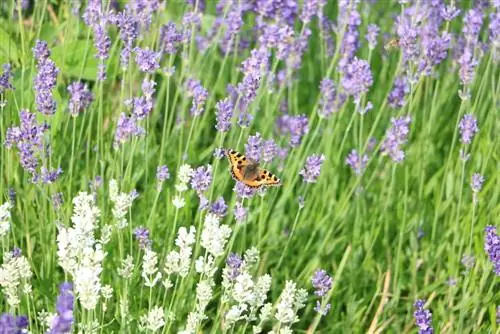
- Synonyms: true lavender, narrow-leaved lavender
- Flower color: purple
- Flowering period: July to September
- Growth height: up to 80 cm
- Water requirement: low
- Fertilizer requirement: low
- Cutting: yes, after flowering

